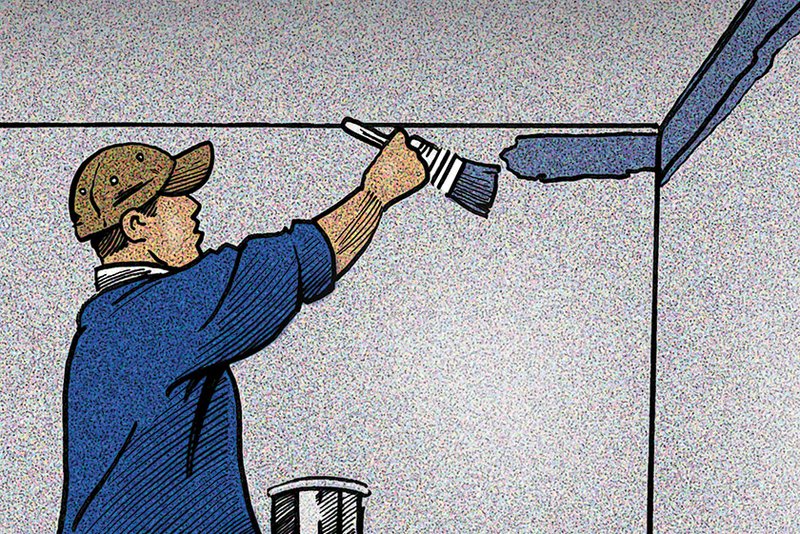I'm planning to paint several interior rooms in my home this spring to help brighten and freshen up my living space. What is the best way to do this?
This is a home improvement project which is fairly inexpensive but gives a lot of bang for the buck, explains Jim Wawak, manager of the Sherwin-Williams paint store in Little Rock's Heights neighborhood.
"First, you need to have a clean, sound surface," Wawak said.
Determine what type of paint is on the wall before beginning.
"If it's an oil-based enamel, you'll have to sand it and then put an oil-based or latex-based primer over that." Afterward, most people choose to paint with latex over the primer.
• Preparing the surface
Before the walls are sanded (if needed), the first step is to make sure any nail holes as well as any other imperfections in the surface are filled in with a putty of lightweight spackle and those areas are also sanded to smooth them out.
"Make sure everything is ready to go before you put the primer over it," Wawak says, adding that any areas or items where paint is not to be applied should be protected by covering.
"You can use blue painter's tape to cover the baseboards and the trim," he says. "A lot of time, when people are doing the painting themselves, they'll move all of the furniture to the center of the room and cover it with a thin sheet of plastic to keep paint from getting on it," he says, adding that his store also offers a floor paper which can be applied and butted up against and taped to the room's baseboard to protect the flooring from paint splatters.
• Selecting the right color
Before committing to buying gallons of paint, Wawak recommends those planning to paint to try out the colors they are interested in inexpensive quart-size portions.
"They can be made in just about all of the colors and can be tested on the wall before you buy them by the gallon," he says, adding that another
option is to cut a large piece of
foam-backed poster board into four pieces, paint them in different colors and stand them along the wall to see how they look.
• The right tools for the job
When it comes to supplies, he suggests using a synthetic 3/8- to 1/2-inch-nap roller cover on the wall and a good 2-inch or 21/2-inch Purdy sash brush, which he says is the most popular one with contractors.
"The angle helps get in the corners and up against the ceiling if they're cutting it around the ceiling and baseboards," he says.
• Just the right amount
Measuring spaces to be painted to get the square footage will help determine how much paint is needed. The average gallon of paint will cover about 350 square feet.
• Priming the walls
If the color is going to be changed, especially to a lighter color, darker colors will most likely need to be primed first. Wawak says in most cases two coats is the route to take in order to achieve the desired finished results, even when using a paint which includes a primer.
"This is especially true if it's been a long period of time since it's been painted. The walls will tend to dry out and when it is painted again will absorb a lot of the first coat," he says. "The second coat will give uniformity and look a lot better."
• Topping it all off
When it comes to the ceiling, the best route is to choose a quality paint recommended for ceilings as it tends to cover better. "Remember to prime the area if there are any water stains and use a flat paint as it tends to not show any imperfections," he advises. "And when you're painting, open the windows if you can. It's always good to ventilate."
Do you have a decorating or remodeling question? We'll get you an answer from an authority. Send your question to Linda S. Haymes, Arkansas Democrat-Gazette, P.O. Box 2221, Little Rock, Ark. 72203 or email:
lhaymes@arkansasonline.com
HomeStyle on 02/11/2017
